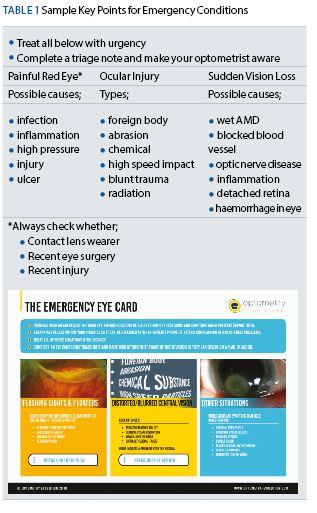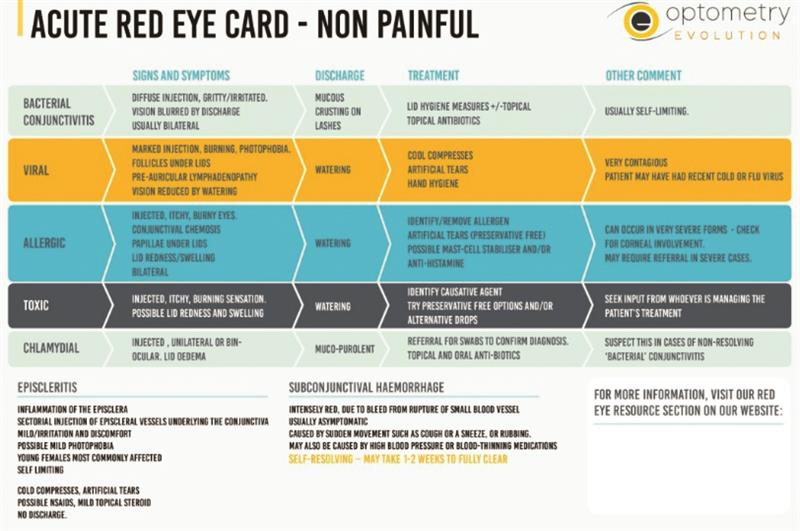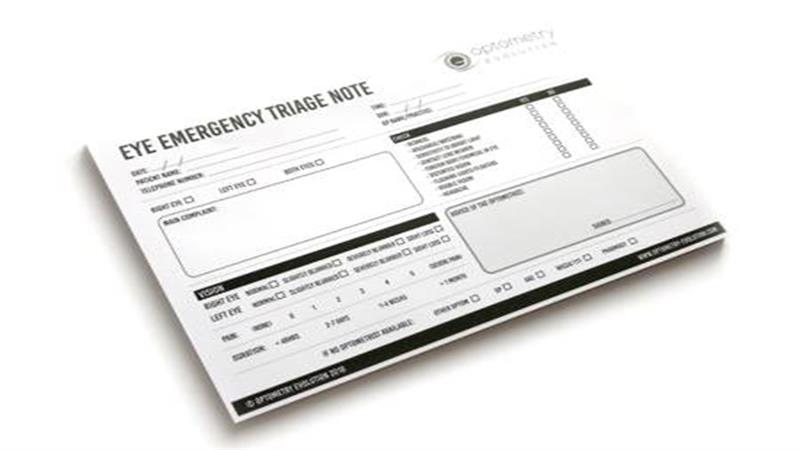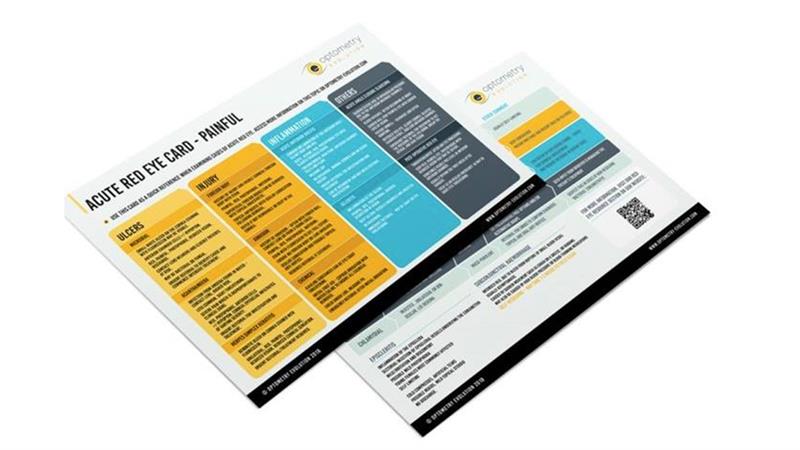The emphasis of eye care is changing, with community optometry practices becoming more relied upon as the first port of call for acute eye conditions. Schemes in the UK, such as MECS, PEARS and the GOS contract in Scotland, are helping to develop our role as the first line of care when patients present with acute and often very serious eye conditions. In so many scenarios where a patient encounters an urgent condition, ensuring the patient is seen as quickly as possible by the right person, for accurate diagnosis and treatment, is crucial in order to increase the chance of a positive outcome.
To facilitate this increased responsibility, I have developed a range of emergency eye care resources to support optometry practices in their role of getting the patient journey correct from the start.
Emergency eye resource pack
The first kit I have produced is the Emergency Eye Resource Pack (figure 1). The very first person in a practice that the patient will speak to when they call or present with a worrying condition will usually be a member of the front of practice team. It is very rarely the optometrist. It is, therefore, really important that we give the practice support staff the tools they need to have full awareness of the main types of urgent and emergency conditions that may present to them. They should understand the symptoms relating to these conditions and be able to quickly identify those we consider as ‘red-flags’. It is also really helpful if they are able to quickly and confidently gather all the accurate and relevant triage information from the patient and then to be able to communicate this swiftly to the optometrist for a decision on how to proceed further.
The resource pack contains three elements:
- A set of cards which clearly summarise the main types of urgent conditions and some basic information around these (see table 1). The cards can be distributed throughout the practice so they can be easily referred to if a patient calls with a concern.
- A concise triage pad (figure 2) which aids gaining the appropriate information for the patient and their symptoms, and can then be handed to the optometrist for them to record their suggested course of action. These can then be kept in the patient records.
- A training booklet which contains patient scenarios designed to support small group staff training exercises. Staff would explore these scenarios and discuss what they would do in these situations given the nature and location of their practice. This type of staff training might be carried out every few months to keep this topic fresh in the minds of the practice team, and particularly when new members join the practice.
Acute Red Eye Card
The second resource I have developed is an Acute Red Eye Card for optometrists, GPs and pharmacists (figure 3).

This card gives an overview of acute red eye conditions and highlights all of the key symptoms along with some clinical pearls (see table 2).

Table 2: Sample key points for acute red eye conditions

Figure 2: Triage note pad
They differentiate the more serious conditions which have associated pain on one side versus non-painful conditions on the reverse. I am hoping to build up a red-eye resource on the Optometry-Evolution website in due course which will link in with this.

Figure 3: The Acute Red Eye Card
Story so far
I recently delivered a workshop for an audience consisting of dispensing opticians at the Scottish Optical Conference in Glasgow and this was very well received. We discussed some of the training scenarios from the resource pack which the audience found engaging.
Table 2: Sample key points for acute red eye conditions
Each scenario stimulated plenty of discussion and this format might easily be adopted in any practice for all staff to join in upon. Feedback from those who so far have ordered the packs has also been very positive.
Stanley Keys is a hospital optometrist currently working in Inverness, Scotland.
Further information on these resources can be found at www.optometry-evolution.com
